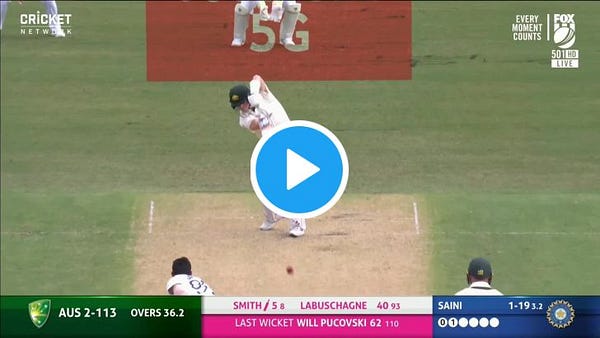Conditions, Conditions, Conditions
Steve Smith walked into bat in the 35th over of the Australian innings and proceeded to score four boundaries in his first 20 balls. He finished the day on 31 not out in 64 balls, having played for stumps for the last half hour. After the day’s play he said he wanted to put some early pressure on Ashwin.
Smith’s approach in this innings was shaped by several things. First, he walked into bat in the 35th over, as opposed to overs 18 and 21 at Adelaide and 14 and 18 at Melbourne. The ball was at least an hour older here than it was in Smith’s previous innings. Further, as these two straight drives and the evidence from the innings played by Pucovski and Labuschagne show, there was less seam movement on offer for the bowlers, and thus, it was possible to drive down the ground even when the ball was not a half volley. When that shot is on, the bowlers invariably have to retreat into a more defensive length.
The pitch shapes what is available to the bowler in cricket, and the batsman gets to play whatever the bowler can offer on a given pitch. With less seam movement, India’s approach of bowling straight becomes less effective because their ability to challenge both edges of the bat diminishes. They’ll have to try a less attacking approach and exert control in a different way. Ravindra Jadeja and Ravichandran Ashwin are going to bowl a lot of overs tomorrow.
The Sydney pitch has been the friendliest for batting in Australia for the last five years, and it is playing true to form in this Test. Batting fourth will be difficult though. Australia have tried to attack Ashwin early right through this series, and until Sydney it had not worked. After just 55 overs of play though, there was some hint of turn for Ashwin. That might give the spinners something to work with.
It will be interesting to see how India approach the bowling on Day 2.





